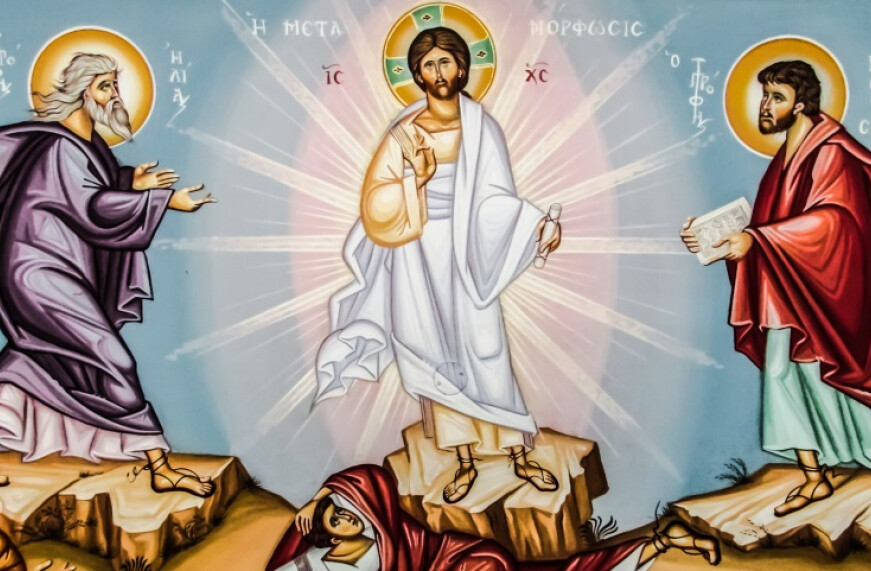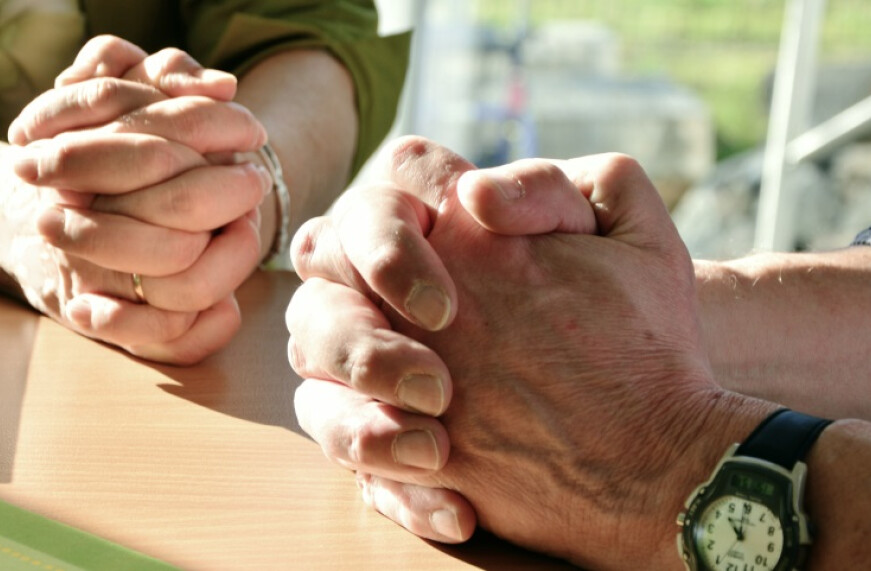Divine Mercy Chaplet

I was teaching fourth grade in 2009, when I became familiar with the Chaplet of Divine Mercy. I had heard the Chaplet being said on Relevant Radio. Upon hearing how the Chaplet was discussed and shared, I did my own research to learn more. By this time, Pope John Paul II had already entrusted the world to the Divine Mercy on the day of St. Faustina's canonization in 2002,and declared the second Sunday of Easter, Divine Mercy Sunday. St. Faustina was the nun associated with the message and image of the Divine Mercy. You most likely have seen it. It is a rendering of the image of Christ with his hand over his heart revealing a stream of red and blue light with the words "Jesus, I trust in you" emblazoned below it. The significance of the image is relayed in this manner from the Diary of St. Faustina:
Paint an image according to the pattern you see, with the signature: Jesus, I trust in You. I promise that the soul that will venerate this image will not perish. I also promise victory over [its] enemies already here on earth, especially at the hour of death. I Myself will defend it as My own glory (Diary, 47, 48). I am offering people a vessel with which they are to keep coming for graces to the fountain of mercy. That vessel is this image with the signature: Jesus, I trust in You (327). I desire that this image be venerated, first in your chapel, and [then] throughout the world (47).
At the request of her spiritual director, St. Faustina asked the Lord about the meaning of the rays in the image.
The two rays denote Blood and Water. The pale ray stands for the Water which makes souls righteous. The red ray stands for the Blood which is the life of souls. These two rays issued forth from the depths of My tender mercy when My agonized Heart was opened by a lance on the Cross. Happy is the one who will dwell in their shelter, for the just hand of God shall not lay hold of him (299). By means of this image I shall grant many graces to souls. It is to be a reminder of the demands of My mercy, because even the strongest faith is of no avail without works (742).
These words indicate that the Image represents the graces of Divine Mercy poured out upon the world, especially through Baptism and the Eucharist.
The message of the Divine Mercy is simple: God loves us - all of us. His mercy is greater than our sins, so that we call upon Him with trust, receive His mercy, and let it flow through us to others. When praying with the Divine Mercy, we are to follow the ABCs.
A - ask for His mercy
B - be merciful
C - completely trust in Jesus
The first time I put this into practice back in 2009, I was struggling in communicating concerns to a parent of one of my students. Despite my best efforts, our conversations would typically end up contentious and the situation unresolved. I was left feeling frustrated, misunderstood, and angry. At times, hurtful and unkind things were said by the parent which didn't contribute anything positive to the situation. Without knowing what else to do, I called upon the Divine Mercy. I held this parent in my mind asking for mercy on our situation. I asked for forgiveness upon the hurts I felt as well as those I may have imparted. I asked the Lord for clarity in the situation. I then began to pray, very intentionally, keeping the image of that parent's face in my mind with each "For the sake of His sorrowful passion, have mercy on us and on the whole world." By the time I completed the chaplet, I was at peace. As testimony to its power, the parent contacted me within hours, deeply remorseful for how our conversation transpired.
After experiencing the power of the chaplet, I decided to teach my students how to pray it with the same practical approach that I had used. As a class, we did this every Friday. The chaplet is one of many prayers in my arsenal, but serves me well when I can't get past my own inadequacies and difficulties in relationships. It's healing grace soothes the worst hurts. Admittedly, I have to pray it more than once in certain situations over a longer period of time, but it brings the forgiveness and mercy it promises.
I submit my witness. If the Chaplet of Divine Mercy is not part of your prayer routine, I would encourage you to give it a try. It can be said with a rosary or your fingers. It takes less than 15 minutes. It is tremendously powerful . Jesus, I trust in you!


